Although this website might bear the name of Maurice Beresford, when talking about Maurice, another name always appears – that of John Gilbert Hurst, the co-author of the 1971 publication and long-time collaborator on the Wharram Research Project. What is presented here is not a full biography, but paints an outline of the partner whose name should also be placed prominently in the study of deserted medieval settlement.
John had grown up in a variety of different landscapes as a child, Cambridgeshire, Leicestershire and Sussex (Aston et al. 1989: 2). After attending Harrow, he read prehistoric archaeology at Cambridge graduating in 1951. As part of his course, the skills of excavation were not formally taught so he and other graduates started excavations ‘to train ourselves’ (Hurst 1986: 8). For this purpose they chose a medieval site, the moated site at Northolt.
Hurst’s interests in medieval sites and pottery were developing and so in early 1952 he wrote to Maurice Beresford with questions about the pottery from Wharram Percy (Beresford 1986: 23). This was the opportunity both of these men had been looking for and as Beresford put it, Hurst would ‘professionalise our amateur questionings’ (Beresford 1986: 23). After visiting Beresford and the excavations at Wharram Percy in the summer, Hurst saw the potential that archaeology could bring to the study of deserted medieval settlement. He prepared a lecture for the British Association meeting later that year highlighting their potential. He concluded that the study of deserted medieval villages had to be multi-disciplinary and by November the Deserted Medieval Village Research Group (DMVRG) was formed, although Maurice remained unconvinced by the idea. By December Wharram Percy had been chosen by the group as the best site for a research excavation (Beresford and Hurst 1990: 31-32). Through the work he spearheaded within the DMVRG, the gazetteer that forms the backbone of this website was produced. He edited the Annual Reports for the group from its inception until 1967. Many of his published works review the archaeological work carried out in those early years at medieval settlement sites (Hurst 1953, 1971). His own report of this frantic first year of the development of the group can be read in his paper ‘The Work of the Medieval Village Research Group’ (Hurst 1986).
John’s influence at Wharram saw the development of archaeological techniques, particularly the use of open-area excavations, but also the discipline of medieval archaeology which became formed as work at Wharram progressed. He was one of the founders of the Society for Medieval Archaeology as well as other specialist groups that developed from his other interests (Addyman 2003).
John had a scientific and methodical manner of working and this is reflected in his other passion – medieval pottery – with him becoming one of the country’s experts on imported medieval pottery (Hurst et al. 1986, Redknap and Gaimster 1992). Early in his career he had also identified the types of pre-Conquest pottery present in the east of England which enabled dating of many early sites (Dyer 2007, Hurst 1955, 1956, 1957).
John became Inspector of Ancient Monuments with the Ministry of Works in 1952 and became Principal Inspector in 1973, and Assistant Chief Inspector in 1980 (Dyer 2002: 5). In essence this role has attributed to him the title as ‘the man from the ministry’ aside the academic professor of Maurice Beresford (Thompson 1971: 182). This position though gave him responsibility over allocating the meagre funds to the excavations of medieval sites and entrusting direction of these sites to people in whom he saw potential. Through his work he managed to protect and save many medieval settlement sites at a time when many of them were threatened by ploughing and industry as well as finding funds to excavate some key sites.
Addyman, P. 2003. ‘John Gilbert Hurst (1927-2003)’, Medieval Archaeology 47: 195-197.
Aston, M., D. Austin and C. Dyer (eds) 1989. The Rural Settlements of Medieval England. Oxford: Blackwell.
Beresford, M.W. 1986. ‘A Draft Chronology of Deserted Village Studies’, Medieval Settlement Research Group Annual Report 1: 18-23.
Beresford, M.W. and J.G. Hurst 1971. Deserted Medieval Village: Studies. London: Lutterworth Press.
Beresford, M.W. and J.G. Hurst. 1990. Wharram Percy: Deserted Medieval Village. London: Batsford.
Dyer, C. 2002. ‘Obituary – John Hurst’, Medieval Settlement Research Group Annual Report 17: 5-6.
Dyer, C. 2007. ‘Hurst, John Gilbert (1927–2003)’, Oxford Dictionary of National Biography. Oxford: Oxford University Press. [http://www.oxforddnb.com/view/article/89983, accessed 20 Jan 2014].
Hurst, J.G. 1953. ‘Deserted Medieval Villages. List of Excavated Sites’, Archaeological Newsletter 4: 192.
Hurst, J.G. 1955. ‘Saxon-Norman Pottery in East Anglia’, Proceedings of the Cambridge Antiquarian Society 49: 43-70.
Hurst, J.G. 1956. ‘Saxo-Norman Pottery in East Anglia. Part II: Thetford Ware’, Proceedings of the Cambridge Antiquarian Society 50: 29-60.
Hurst, J.G. 1957. ‘Saxo-Norman Pottery in East Anglia. Part III: Stamford Ware’, Proceedings of the Cambridge Antiquarian Society 51: 37-65.
Hurst, J.G. 1971. ‘A Review of Archaeological Research (to 1968)’, in M.W. Beresford and J.G. Hurst (eds) Deserted Medieval Villages: Studies: 76-144. London: Lutterworth Press.
Hurst, J.G. 1986. ‘The Work of the Medieval Village Research Group 1952-1986’, Medieval Settlement Research Group Annual Report 1: 8-13.
Hurst, J.G.H., D.S. Neal and H.J.E. van Beuningen 1986. Pottery Produced and Traded in North-West Europe 1350-1650. Rotterdam: Rotterdam Papers VII, Museum Boymans-van Beuningen.
Redknap, M. and D. Gaimster 1992. Everyday and Exotic Pottery from Europe c 650-1900. Oxford: Oxbow.
Thompson, M. 1971. ‘Deserted Medieval Villages. Studies’, Medieval Archaeology 15: 180-182.
